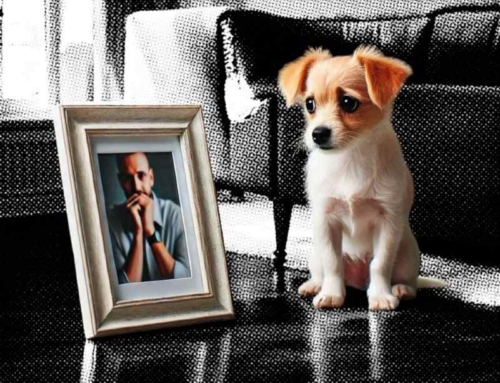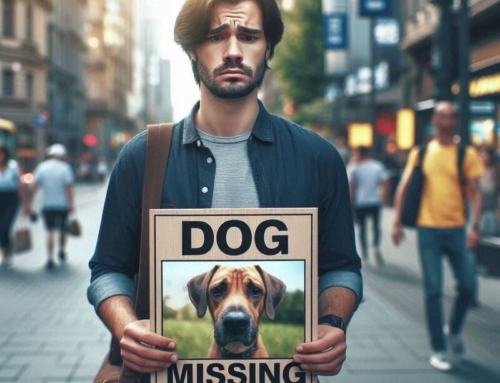Let’s be honest for a sec—training your dog isn’t as simple as saying “sit” and magically getting a butt on the floor. No, it’s like… navigating through a maze where the walls keep shifting. Dogs, they’ve got their own way of thinking—processing information, emotions, and even the way they react to us (spoiler: it’s not always what we expect). You can’t just expect them to “get it” the first time—though when they do, it feels like winning the lottery, doesn’t it?
So, let’s talk about dog communication. Not the command-and-control style, but the real deal—understanding your dog like they’re that slightly odd friend who speaks another language but *gets* you in a way that no one else does. Let’s get into the good stuff—the quirks and the small victories.
Table of Contents:
1. Consistency—Or, Is It?
Consistency. It’s the word everyone throws around like it’s the secret to life, the universe, and everything. And yeah, it’s important, but man, it’s hard to nail it every single time. I mean, think about it—you’re supposed to use the same exact tone, word, and gesture every time? In real life, that’s tricky. One day, you’re calm and collected; the next, you’ve had five Zoom meetings, spilled your coffee, and your voice is just not where it needs to be.
But, here’s the thing—dogs kinda love that predictability. They’re into routines like your grandma’s into knitting. If one day you say “come” and the next you say “here,” they’re gonna look at you like, “What do you mean, human?” (Okay, maybe not that dramatically, but you get the idea.) It’s like changing the rules mid-game—frustrating.
So, when you pick a word, stick to it. Same with gestures. You wave your hand every time you say “stay”? Cool. Keep doing that. And timing is a big deal, too. If your dog sits and you’re fumbling for a treat, they’re going to think, “What was that all about?” You gotta be on it—right in the moment, not ten seconds later.
2. Positive Reinforcement… Because It’s All About Bribes, Right?
Look, we’ve all heard it—positive reinforcement is the gold standard. You reward the good stuff, ignore the bad. But here’s a little secret: it’s more like you’re bribing your dog, but in a totally non-sleazy way. (Okay, that sounded wrong, but bear with me.) You’re basically saying, “Hey, do this thing, and I’ll make it worth your while.” And, surprise, surprise—it works.
You know how you treat yourself to a giant brownie after a long day just to keep going? Dogs are kinda like that. You ask them to sit, they do it, and BAM—reward time! Could be a treat, a belly rub, or a quick toss of their squeaky toy (side note: how do dogs never tire of those toys?).
But… here’s where it gets tricky. Timing. If you’re too slow with that praise or treat, your dog’s gonna be like, “Wait, what am I getting rewarded for again?” It’s like if you got a promotion at work a month after you aced that project—awesome, but a little confusing.
3. Body Language: Because Dogs Are Basically Mind Readers
Let’s get something straight—dogs read body language better than any human I know. You think you’re telling your dog to stay, but your body’s doing something entirely different—leaning forward, maybe? Yeah, your dog’s already prepping to follow you because your body language is saying, “We’re moving.”
I once told my dog to “stay” while I bent down to pick up a sock—big mistake. Of course, he thought I wanted to play and pounced right after me. Dogs don’t just listen to words; they’re checking your every move like you’re some reality TV show they can’t stop watching.
So, next time you give a command, try pairing it with a physical cue—like an open palm when you say “stay.” Over time, your dog’ll learn that just seeing that hand means “freeze.” It’s kind of like having a silent code… or something out of an action movie. (Though, let’s be real—it’s not always that smooth.)
4. Dog Training Patience… You’re Gonna Need a Lot of It
Oh, patience. The virtue we all think we have—until we’re waiting for our dog to figure out a simple command, and it feels like forever. Training isn’t a sprint, it’s more like a marathon, with some detours, maybe a snack break (or two), and a lot of “Come on, you can do it!”
But really, patience is everything. I remember trying to teach my dog to lie down—it took weeks. Weeks! I thought he’d never get it. I’d sit there, treats in hand, and he’d look at me like, “Huh? You mean roll over, right?” But eventually, it clicked. It always does, even when it feels like you’re shouting into the void.
And—fun fact—dogs have moods, too. Some days, they’re just not into it. Maybe they’re distracted by a bird or just having an off day (sound familiar?). That’s where empathy comes in. If your dog’s not feeling it, give them a break. Training is as much about their mood as it is yours.
5. Boundaries: Dogs Need ‘Em… Even If They Won’t Admit It
Boundaries are like… the unsung hero of training. You think your dog hates them? Nope. They *thrive* on them. It’s like giving them a road map for life—sure, they’ll test the edges, but in the end, boundaries help them feel safe.
Leash pulling? Ah, yes, the classic struggle. If your dog’s pulling, you stop. Simple, right? Except—no, it’s never that simple. They want to keep moving, they’re excited (probably saw a squirrel), but stopping every time they pull will teach them that pulling equals no-go. Eventually (hopefully) they’ll figure out that staying by your side keeps the adventure going.
And don’t even get me started on the couch situation. One day, you let them up, and the next, they’re banned. Of course, they’re confused. (I mean, wouldn’t you be?) Boundaries need to be consistent if you want them to stick.
6. Play… Because It’s Not All Serious Business
Dog training doesn’t have to feel like school all the time. Honestly, play might be one of the best ways to teach your dog without them even knowing it. I used to sneak commands into a game of fetch—“drop it” and “stay” worked their way in naturally, and suddenly, training wasn’t a chore—it was just fun.
And you know what? Play builds trust. It reminds your dog that, yes, you’re the one calling the shots, but you’re also their buddy. Dogs want to enjoy life with you, not just follow orders.
—
So, yeah—building communication with your dog? It’s not always clean or linear. Sometimes, it’s messy. There are setbacks, frustrations, and moments where you just stare at each other, not knowing who’s more confused. But when that connection finally clicks, when you realize that your dog isn’t just following orders but is *choosing* to work with you? It’s worth every single second.






